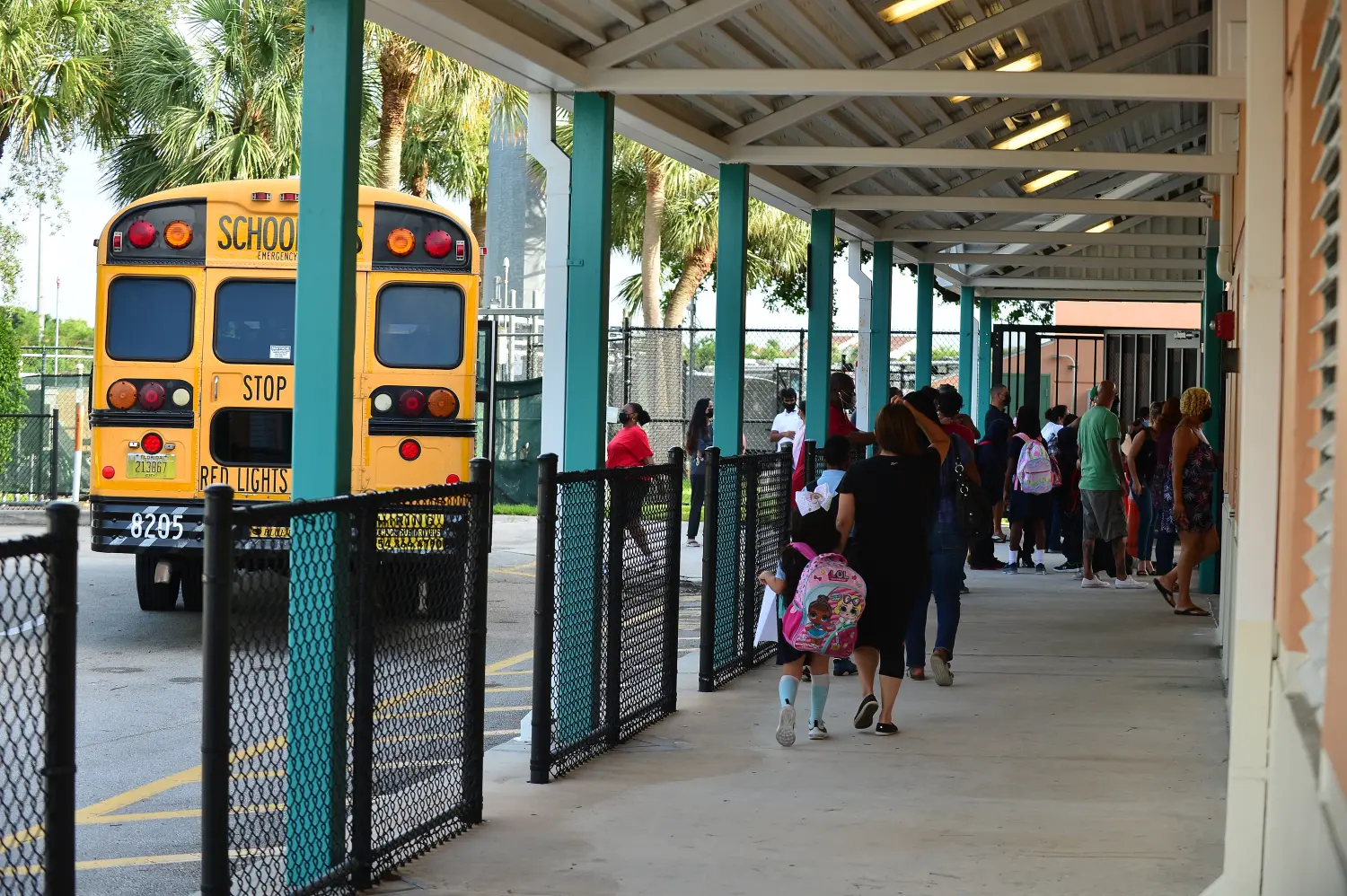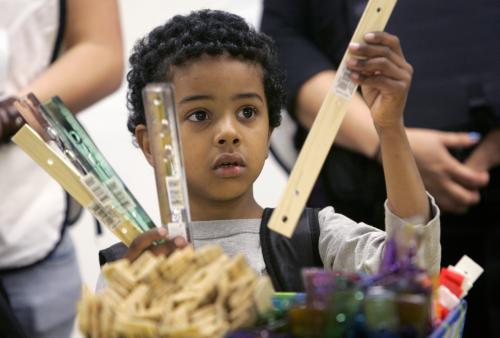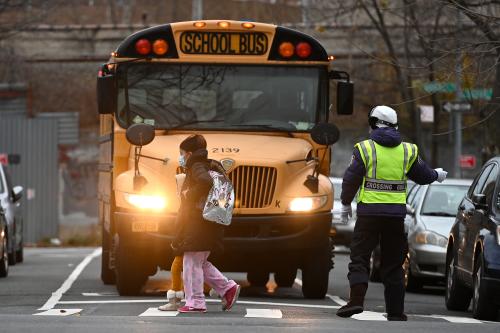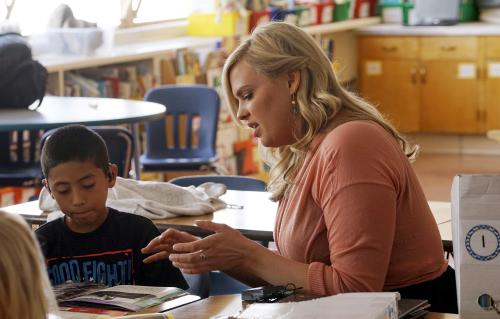Scores from the 2022 National Assessment of Educational Progress have captured national headlines, documenting unprecedented declines in student performance in math and reading. For lower-performing students, the drops were even more severe. The COVID-19 pandemic profoundly disrupted students’ academic progress by shuttering schools, but also because of the negative mental health effects caused by isolation and the trauma of economic hardships and the loss of loved ones. Recovery will take time, and there are no easy answers. Our recent research suggests that expanding instructional time, particularly for schools with shorter days and years, can play an important role in our ongoing efforts to accelerate student learning.
Adding Instructional Time Can Increase Academic Achievement
As part of our research, we conducted a systematic review of the most rigorous causal literature on the relationship between instructional time and academic achievement. Together, the literature paints a compelling picture that adding time can increase student achievement, though the benefits of this time depend on how time is increased and for which students.
The two primary ways of increasing instructional time are adding days to the year and lengthening the school day. Our review of the literature shows that both can be effective. Research from Mexico, North Carolina, Sweden, and across the United States finds a small positive increase in math and English scores from the addition of 10 or more extra days. Even small increases in the length of the school day–90 minutes or less, in Germany, Israel, and other contexts – have led to positive results, albeit with smaller effect sizes and sometimes only in some subjects. Effects also vary by grade level with many studies showing younger students benefitting the most.
Evidence of the positive effect of expanded learning time on student achievement appears strongest for extending the school year. This may be because there is little organizational or behavioral change required on the part of schools when extending the school year, whereas extending the school day is often coupled with efforts to adapt school schedules and adopt new instructional techniques.
While additional instructional time can increase academic achievement, it does not always do so. Research on the Expanded Learning Time Initiative in Massachusetts found no significant effect on achievement in math, ELA, or science. Studies like this demonstrate the importance of preventing staff and student fatigue and aligning how the time is used to the specific outcomes that schools hope to target.
Instructional Time Varies Tremendously Across the U.S.
Despite the importance of instructional time, some students are in school over the course of the year for hundreds of hours more than others simply because of where their families live. The figure below illustrates this wide variation wherein the total number of school hours per year differs by almost 200 hours between schools at the 90th and 10th percentiles (1,323 vs. 1,134 hours). That gap equates to a difference of approximately five and half weeks of schooling based on the mean of 6.87 hours per day.
Figure 1: Distribution of hours in the school year for U.S. public schools
Source: Authors’ calculations using data from the 2015-16 National Teacher and Principal Survey. Chart shows distribution of number of hours in the school year (length of school day * days in school year) across U.S. public schools. Figure excludes schools below the 1st percentile and above the 99th percentile.
As the main governing authority in education in the U.S., states can set the minimum length of the school year, the minimum amount of total instructional hours, and/or the minimum number of hours in a school day. A database from the Education Commission of States shows that 38 states specify a minimum total number of hours per year, with high school hours ranging between 720 hours in Arizona to 1,260 hours in Texas. Even setting these two outliers aside, there exist large differences across states. Graduating seniors in Maryland will have been required to attend high school for 30% longer–approximately 160 more days–than students in Alaska, Florida, and Connecticut.
These differences don’t just arise across states; they occur across neighboring schools. When one of us (Novicoff) was a teacher in Los Angeles, her school ended at 3:30pm, 52 minutes after another middle school less than a mile away. The school year also included five additional days. These differences may seem small, but they added up to meaningful gaps in learning time over the course of the academic year. By the end of the 2018-19 school year, her students had experienced more than 200 additional hours of schooling (22% more).
Even within Existing Allocated Time, A Lot is Lost
Our research also demonstrates how the time that schools currently dedicate for learning can slip through the cracks. In a case study of the Providence Public School District (PPSD), we leverage detailed administrative records to estimate the amount of time a teacher is present, their instruction is undisturbed by outside interruptions, and their students are present.
We estimate that the average elementary school student in PPSD loses 16% of allotted instructional time, while the typical middle school student loses 21%. High school students lose a total of 25%, a full fourth of their instructional time. Assuming that additional time would suffer from the same rate of loss, Providence would need to add an extra 1.85 total hours to every school day to achieve the 5.76 hours of daily instructional time that the district intends for its high school students.
The true amount of lost learning time is surely even higher given that we assume all potential learning time is actually being used for learning. As former teachers, we know this is not the case. One study estimates that between 11% and 28% of potential academic time can be lost to students being off-task, a factor we did not account for in our calculations.
What Can Districts and States Do?
As schools confront the significant challenge of accelerating academic achievement in the aftermath of the COVID-19 pandemic, we recommend two clear changes to policy and practice:
- States should consider increasing minimum learning time requirements. Such laws are blunt instruments, but they offer a feasible top-down policy reform that is within the control of policymakers and district leaders. Given the research suggesting instructional time has diminishing marginal returns, focusing on those schools that offer the least amount of time should produce the largest benefits.
- Most schools could substantially increase the amount of enacted learning time for students by reducing time loss within the existing day. Behavioral interventions to increase student attendance, school-wide systems to reduce disciplinary incidents that can remove students from class, and policies that limit school intercom and phone use could all play roles in maximizing allocated instructional time.
The benefits of extended instructional time can go well beyond core academic achievement. Studies have found that increased time in school can reduce teen pregnancy and incarceration, and increase future wages. It also gives teachers the opportunity to go beyond the formal curriculum in engaging ways. In Novicoff’s school, the extra block at the end of the day allowed her to bring in guest speakers and teach students how to count to ten or write their names in the languages of the civilizations they were studying.
We will need a multipronged approach to address the deep harms caused by the COVID-19 pandemic. The clear inequities in access to learning time suggest that targeted efforts to expand learning time and ensure that this time is used effectively can play an important role in this effort.
The Brookings Institution is committed to quality, independence, and impact.
We are supported by a diverse array of funders. In line with our values and policies, each Brookings publication represents the sole views of its author(s).










